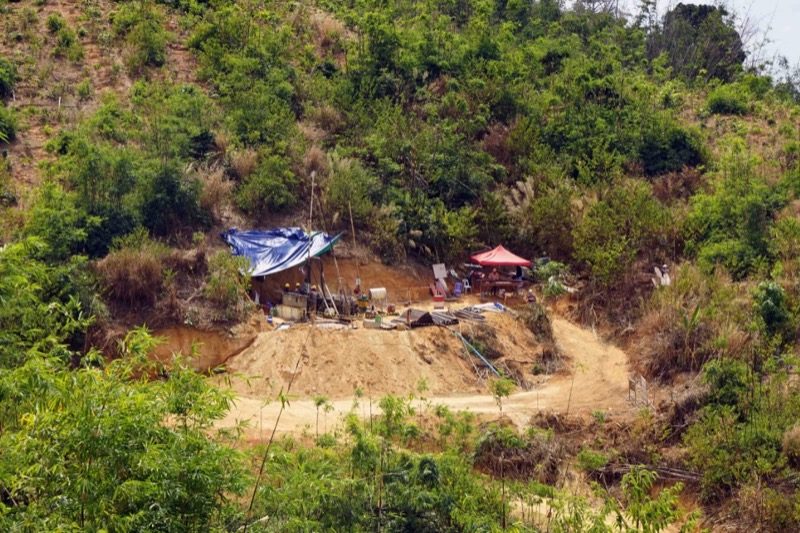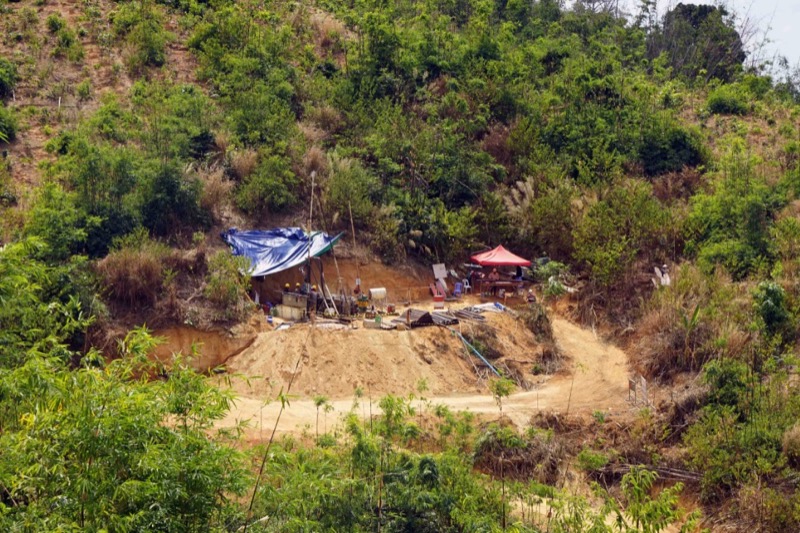After years of stalled projects, representatives of two of Cambodia’s first large-scale gold mining projects are making big promises: huge foreign investment, happy communities and positive contributions to the local ecosystem.
Renaissance Mineral’s $120- million Okvau Gold Project in Mondolkiri province “will be a benchmark to be used in the future by the Cambodian government,” said Justin Tremain, executive director of Emerald Resources NL, which owns Renaissance, at a Mines and Energy Ministry forum on extractive industries on Tuesday. “On a regional level, our project will be a net benefit to the environment.”

Delayne Weeks, Angkor Gold’s vice president of social development, said the company was committed to Cambodia’s welfare, citing projects ranging from a cricket farm to a cucumber garden that uses “super soil,” incorporating recycled waste.
The company recently sold 12 square km of its land for $1.9 million plus yearly production royalties to Indian company Mesco Gold to begin extraction.
But not everyone is convinced that the gold rush will be good for the country.
“We have a big concern in particular on the granting of mining licenses in protected areas,” said Chhith Sam Ath, country director for the World Wildlife Foundation-Cambodia.
Ms. Weeks of Angkor Gold said the company could not be blamed if its 1,291 square km of land under exploration encroached on wildlife sanctuaries that were announced after their purchase.
“You cannot expect a company that has put in millions of dollars to walk away,” she said on Tuesday.
Local communities, particularly the indigenous populations of Ratanakkiri province, have taken a dim view of the operations in their backyards.
Shut out from mining in the forests by better-equipped Khmer prospectors, as well as the big firms, locals are making less money, according to Bun Thai, a monitor for human rights group Licadho in Ratanakkiri.
“They just want to protect their land,” he said. “They don’t want people from outside to exploit the mine.”
Locals were not tempted by the relatively low pay and what they believed to be hazardous conditions for the 20 or so jobs on offer at the Mesco Gold mine, according to Mr. Thai, and were upset that the company had boasted of paying $2,500 per hectare, while they claimed to have only received $1,500.
Peng Navuth, deputy director-general of the general department of mineral resources, said at the forum that better community relations was a top priority for new legislation the ministry was drafting to regulate mineral mining.
Mr. Navuth chided companies for not doing thorough environmental impact assessments required for project approval.
“We need to mention all of the positive impact, the negative impact included. That is the information people want to know.”
An assessment for the Okvau site is nearly complete, with permits expected by mid-year.
The company estimates government taxes and royalties to reach up to $130 million over the initial eight-year mining period, and says it will employ locals, invest in a nearby sanctuary and conduct extensive rehabilitation when the project is complete.




